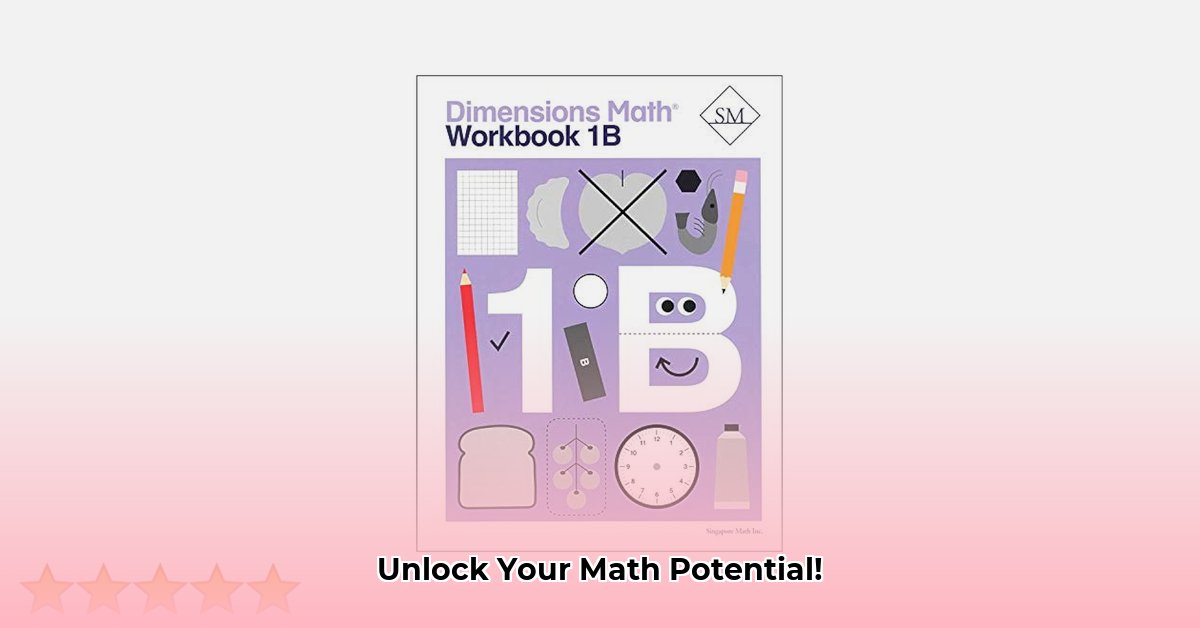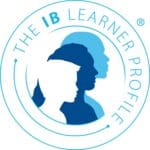Picking the perfect math program for your kids can feel overwhelming. This review dives into Dimensions Math, a K-12 online program, comparing it to traditional Singapore Math and other curricula to help you decide if it’s the right fit for your child’s educational needs and goals. The following information will help you to make a smart choice about math programs for your learner, whether you’re a parent or a teacher.
Dimensions Math: A Comprehensive Review for Enhanced Math Proficiency
Dimensions Math aims to make learning engaging and effective, blending the established principles of Singapore Math with modern online learning tools. It presents itself as a personalized math tutor, without the high cost or scheduling conflicts. But does it live up to its promises? Read on for our in-depth analysis. What are the key features that set Dimensions Math apart?
Understanding Dimensions Math: A Deep Dive Beyond Basic Apps
Dimensions Math distinguishes itself from typical math apps by building upon the proven principles of Singapore Math, a methodology celebrated for cultivating robust number sense and advanced problem-solving capabilities. The program employs a Concrete-Pictorial-Abstract (CPA) approach, where learners begin with hands-on activities, transition to visual representations, and ultimately master abstract concepts. This structured progression facilitates a deeper understanding and reduces potential frustration for children. Do you agree that fostering strong mental calculation skills early on is crucial for a child’s academic success?
Dimensions Math vs. the Competition: Navigating the Options to Find the Ideal Match
How does Dimensions Math stack up against other available math programs? Traditional Singapore Math often relies on in-person instruction, tangible manipulatives, and printed worksheets, textbooks, and traditional teacher-led guidance. Dimensions Math brings this proven foundation online, making it accessible anytime, anywhere. In contrast to some programs focused on rote memorization, Dimensions Math prioritizes conceptual understanding and application. It’s important to remember that Dimensions Math may require active parent or teacher involvement to maximize its potential benefits.
The Learning Experience: A Collaborative Partnership
Dimensions Math thrives on active engagement with the online platform. Parents, guardians, or teachers play a pivotal role in monitoring progress, offering support, and reinforcing concepts. While younger children may require more direct assistance, even independent learners benefit from occasional guidance and encouragement. This creates a dynamic partnership between student, program, and facilitator. A user-friendly interface can significantly enhance the learning experience, while a confusing platform can discourage learners. Research consistently demonstrates that active parental involvement significantly boosts a child’s academic performance. A 2023 study by the U.S. Department of Education showed an increase of up to 40% in academic achievement when parents are actively involved.
The Good, the Not-So-Good, and the Nuances: A Balanced Perspective
Consider the following pros and cons to gain a comprehensive understanding of Dimensions Math:
| Strengths | Weaknesses |
|---|---|
| Rooted in the proven Singapore Math method. | Requires active parental/teacher involvement for optimal results. |
| Integrates online learning with hands-on applications. | Limited independent research on long-term effectiveness and diverse learning styles. |
| Offers efficient student progress tracking and reporting. | Success is contingent on consistent student engagement and motivation. |
| Emphasizes mental math strategies and critical thinking skills. | May necessitate supplemental materials or alternative approaches for some students to fully grasp concepts. |
| Provides a flexible and adaptable learning environment for various schedules. | Potential for technology-related issues to occasionally disrupt the learning flow. |
Maximizing Dimensions Math: Practical Strategies for Success
Unlocking the full potential of Dimensions Math demands a collaborative effort between parents, educators, and students. Here’s how to optimize the learning experience:
For Parents and Guardians:
- Thorough platform exploration: Dedicate time to familiarize yourself with the Dimensions Math interface before your child begins. This will allow you to guide them effectively and answer questions.
- Regular progress check-ins: Actively monitor your child’s progress through the platform’s tracking tools. Identify areas where they excel and areas where they may need additional support.
- Hands-on reinforcement: Supplement online lessons with real-world activities and manipulatives. This helps concretize abstract concepts and makes learning more engaging. For example, use building blocks to illustrate fractions or measure ingredients while baking to practice measurement skills.
- Open communication: Maintain open communication with your child’s teacher, especially if Dimensions Math is being used in the classroom. Coordinate efforts to ensure a consistent and supportive learning environment.
For Educators:
- Curriculum alignment analysis: Carefully assess how well Dimensions Math aligns with your school’s existing math curriculum and learning objectives. Addressing discrepancies proactively will facilitate a smoother integration.
- Targeted intervention strategies: Leverage the program’s progress tracking tools to identify students who may be struggling. Provide targeted one-on-one support, small group instruction, or differentiated activities to address their specific needs.
- Strategic integration: Integrate Dimensions Math thoughtfully into your existing teaching plan. Consider using it as a supplementary resource to reinforce concepts, provide individualized practice, or offer enrichment opportunities. Avoid using it as a complete replacement for traditional instruction without careful consideration.
- Student engagement initiatives: Foster a classroom environment that encourages active participation, collaboration, and inquiry. Design engaging activities, real-world problem-solving scenarios, and interactive discussions to maximize student interest and motivation.
For Students:
- Active and enthusiastic engagement: Participate actively in each lesson and diligently complete practice exercises. Put forth your best effort and embrace challenges as opportunities for growth.
- Proactive inquiry: Don’t hesitate to ask for assistance when you encounter difficulties. Seek clarification from teachers, parents, or online resources. Remember, asking questions is a sign of strength, not weakness.
- Consistent practice and review: Dedicate time each day or week to practice and review previously learned concepts. Consistent effort is key to mastering new material and retaining knowledge.
- Celebrate milestones: Acknowledge and celebrate your achievements, no matter how small. Every step forward is a testament to your hard work and dedication. Reward yourself for reaching goals and maintain a positive attitude toward learning.
The Final Assessment: A Promising Tool, Requiring Commitment
Dimensions Math presents an innovative approach to mathematics education, effectively integrating the strengths of Singapore Math within a dynamic online platform. The success of the program is significantly influenced by the active involvement of the student, parent, and teacher. Further research is needed to fully validate its long-term effectiveness across diverse learning styles and educational settings. Consider Dimensions Math as a valuable resource to supplement learning. With realistic expectations and a dedication to consistent effort and engagement, students can unlock their full mathematical potential.
Dimensions Math Review: Evaluating Effectiveness Against Alternative K-12 Math Programs
Key Takeaways:
- Both Dimensions Math and Primary Mathematics are grounded in the Concrete-Pictorial-Abstract (CPA) approach, facilitating a deeper comprehension of mathematical concepts.
- Dimensions Math distinguishes itself by offering a more structured and guided program, particularly beneficial for educators seeking clear direction.
- Ultimately, the choice between curricula hinges on factors such as teacher experience, student learning styles, and available resources.
Dimensions Math: A Highly Structured Pathway to Mathematical Proficiency
Dimensions Math provides a comprehensive and meticulously structured curriculum designed to promote mathematical understanding. Its key strengths lie in the provision of detailed teacher guides and a consistent lesson format, incorporating “Think, Learn, Do, Activities, Workbook” components to ensure a well-rounded learning experience. This highly structured approach offers clear guidance, especially for teachers who are new to Singapore Math methodologies. However, it’s important to note that this structure can potentially limit teacher flexibility and adaptability to individual student needs. The overall effectiveness of Dimensions Math is therefore contingent on the balance between structure and flexibility in the learning environment.
Primary Mathematics: Fostering Adaptability and Teacher Initiative
Primary Mathematics distinguishes itself by emphasizing teacher creativity and independent initiative in lesson planning and delivery. While this approach allows for greater tailoring to diverse student needs and learning styles, it also necessitates more extensive preparation time and the acquisition of supplementary materials to support instruction. The newer Primary Mathematics 2022 edition seeks to bridge this gap by offering enhanced differentiation options and explicit alignment with US standards. Determining whether Dimensions Math is more or less effective than Primary Mathematics depends on a comprehensive assessment of individual resources, teaching styles, and student learning preferences.
Side-by-Side Comparison: Key Aspects of Each Program
Let’s examine a detailed comparison of the key aspects of each program:
| Feature | Dimensions Math | Primary Mathematics (Older & 2022 Editions) |
|---|---|---|
| Structure | Highly structured, with detailed and prescriptive lesson plans. | More adaptable, requiring significant teacher initiative and the use of supplementary resources. |
| Teacher Guidance | Extensive, offering comprehensive support and direction. | Less extensive, empowering teachers to engage in more independent lesson planning. |
| Flexibility | Lower degree of flexibility, due to structured lesson format. | Higher degree of flexibility, enabling customization to meet diverse student needs. |
| Cost | Moderate pricing, providing a balance between comprehensiveness and affordability. | Moderate to High (depending on the extent of supplementary materials required to enhance instruction). |
| CPA Approach | Yes, explicitly incorporates the Concrete-Pictorial-Abstract approach to learning. | Yes, explicitly incorporates the Concrete-Pictorial-Abstract approach to learning. |
| US Standards Alignment | Yes, explicitly aligned to meet US standards and |
















